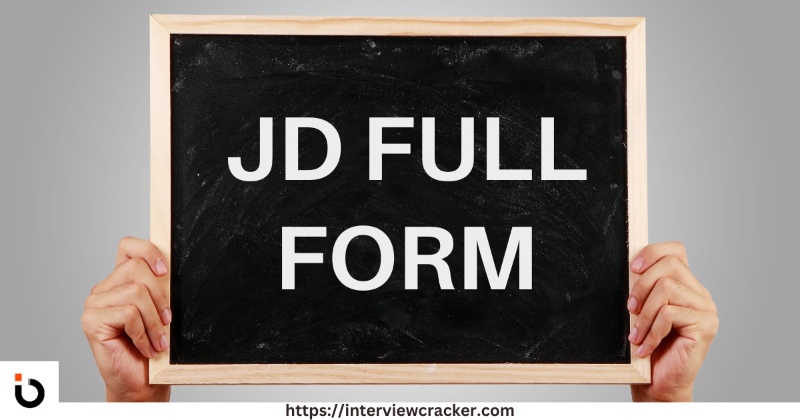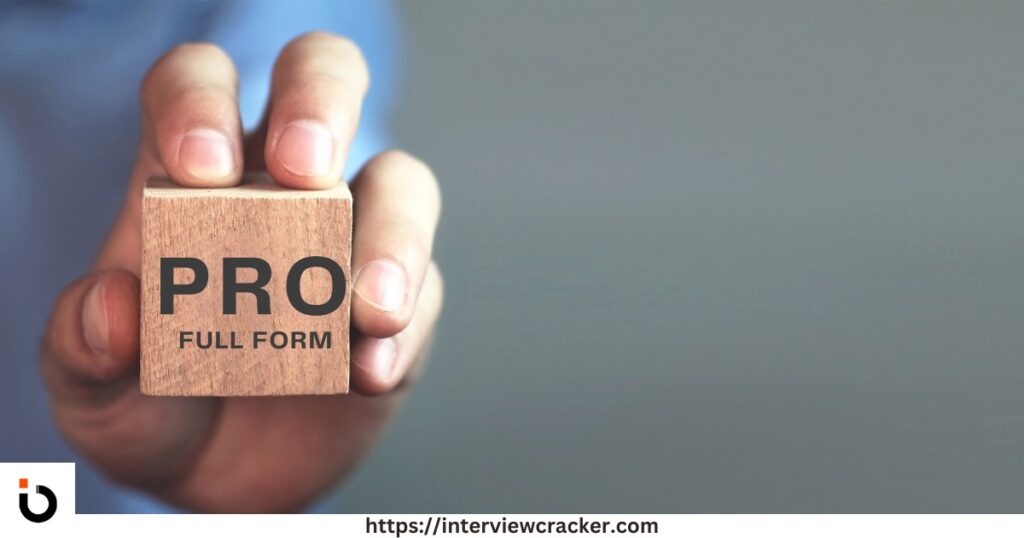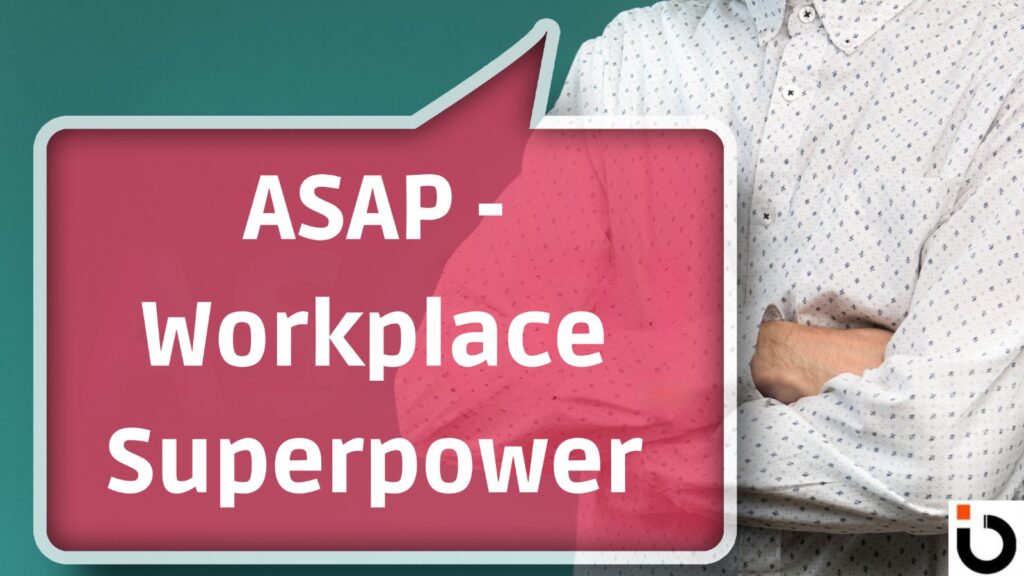In the world of business, finance, and project management, the acronym “EOD” holds substantial importance. Let’s embark on a journey to uncover its full form, meaning, and diverse applications across different domains.
Table of Contents
ToggleWhat is the Full Form of EOD?
EOD stands for “End of Day “. It represents the culmination of daily activities, marking the conclusion of tasks, transactions, or operations within a specified timeframe. End of business day abbreviation is EOD.
What Does EOD Mean? | What is EOD?
EOD encapsulates the essence of closure and completion, serving as a pivotal reference point in various professional contexts.
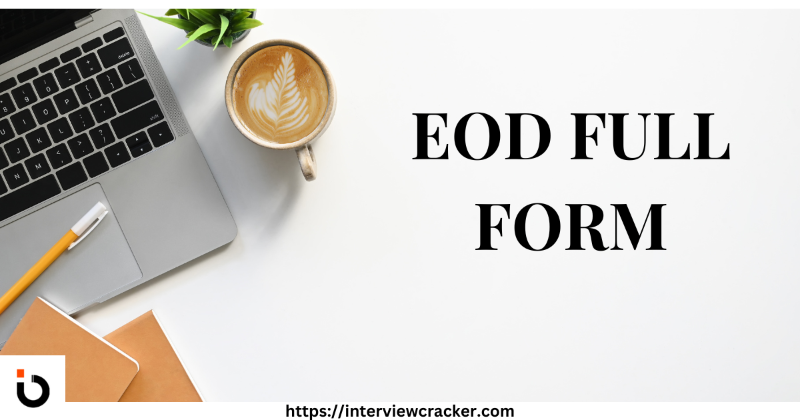
EOD in Different Contexts:
1. EOD in Project Management:
In the realm of project management, EOD delineates the deadline for completing tasks, achieving milestones, and providing updates on project progress. It facilitates effective time management and ensures timely delivery of project objectives.
2. EOD in Finance and Business:
Within the domain of finance and business, EOD signifies the end of trading activities, financial transactions, and operational processes for the day. It is instrumental in reconciling accounts, generating reports, and preparing for the subsequent business cycle.
3. EOD Full Form in Medical
In the medical field, EOD stands for “Every Other Day.” This term is often used in prescriptions and medical instructions to indicate how frequently a medication should be taken or a treatment should be administered.
4. EOD Full Form in Bank | EOD Full Form in Banking
In banking, EOD stands for “End of Day.” This term is used to denote the time when all of the day’s transactions are processed and the bank’s books are closed. It marks the cutoff point for transactions to be included in that day’s business.
5. EOD Full Form in Company
In a corporate or business environment, EOD also stands for “End of Day.” This is a common deadline given for tasks, indicating that something must be completed by the close of the business day.
6. EOD Full Form in Military
In the military, EOD stands for “Explosive Ordnance Disposal.” This is the discipline associated with dealing with the construction, deployment, disarmament, and disposal of high explosive munitions and other hazardous materials.
7. EOD Full Form in Chat
In online chat or digital communication, EOD means “End of Discussion.” It is used to signify that a person does not wish to continue the conversation or that the topic is considered closed.
8. EOD Full Form in Aviation
In aviation, EOD typically stands for “End of Duty.” It refers to the time when a pilot or crew member completes their scheduled flight or duty period.
9. EOD Full Form in Mail
In email or other forms of written communication, EOD generally means “End of Day.” Similar to its use in business and banking, it sets a deadline by which tasks or responses should be completed or sent.
10. EOD Meaning in Construction
End of Day (EOD) refers to the close of the working day on a construction site.
It is commonly used to set deadlines, reporting times, or daily work completion targets.
Example: “Concrete pouring must be completed by EOD Tuesday.” This means the task should be finished on Tuesday before the end of the workday.
Other Possible Meanings of EOD in Construction (Less Common):
Explosive Ordnance Disposal – Relevant in demolition or military-adjacent construction zones.
Elevation of Detail – Rarely used, but in architectural or civil drawings, it may refer to detailed elevation views.
How Not To Use The Term EOD?
Then using the term EOD (End of Day), it’s important to avoid certain common missteps to ensure clarity and effectiveness in communication. Here’s how not to use the term EOD:
Avoid Ambiguous Contexts:
- Clarify the Specific Time: EOD can vary by business and region. Always specify what you mean by EOD, especially if the time could be interpreted differently by others.
- Include Time Zones: When dealing with international teams, include the time zone to avoid confusion (e.g., EOD PST).
Don’t Use for Immediate Deadlines:
EOD suggests that the task can wait until the end of the business day. If something is urgent and needs to be completed sooner, specify an exact time or use terms like “ASAP” or “by noon.”
Incorrect Timing for Non-Business Days:
Avoid using EOD for deadlines that fall on weekends or holidays, unless you’ve clarified that work continues on these days.
Misuse in Casual Communication:
EOD is typically a business term. Using it in casual or personal communications might confuse those not familiar with the jargon.
Overuse in Oral Communications:
In verbal conversations, it’s better to say “by the end of the day” to ensure the message is understood by everyone, as not all listeners may be familiar with the acronym EOD.
By steering clear of these pitfalls, you can use the term EOD effectively, ensuring that your communication remains clear and your intentions are well understood.
Some Other Similar Acronyms for EOD:
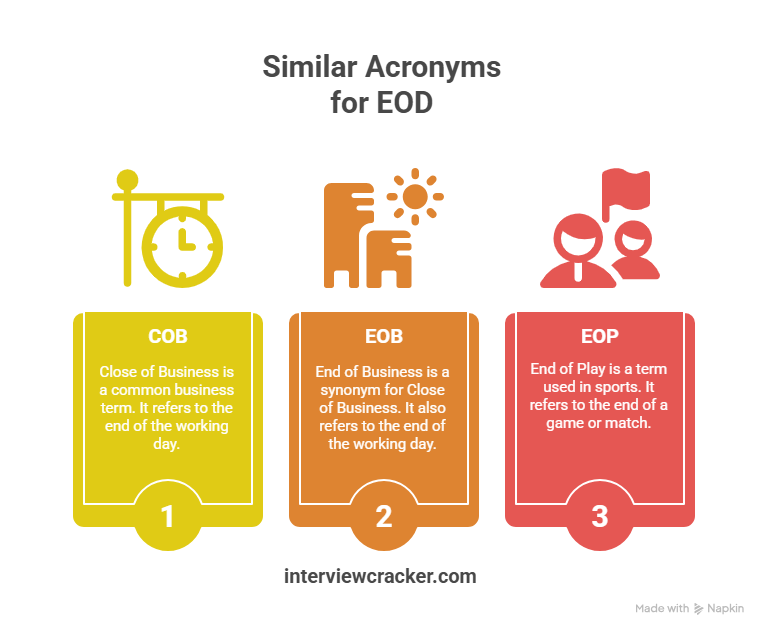
- COB (Close of Business)
- EOB (End of Business)
- EOP (End of Play)
Advantage of EOD Acronym
- Clarity: Clearly communicates a specific deadline within the context of a business day.
- Simplicity: Easy to use and understand in professional communications.
- Efficiency: Helps in setting clear expectations for task completion times, aiding in better time management and planning.
Example of EOD:
Consider an email communication within a financial department:
“Dear Team,
Please ensure all invoices are processed and reconciled by EOD today for month-end reporting.
Thank you,
[Your Name]”
In this example, EOD serves as the deadline for completing financial tasks and preparing for reporting obligations.
What is COB in Business?
COB Full form is Close of Business , is often used interchangeably with EOD, but they convey slightly different meanings.

Difference Between COB and EOD? | COB vs. EOD
Traditionally, COB refers to the end of trading hours in New York City, which occurs at 5 p.m. Eastern Time. EOD, on the other hand, is more versatile and can signify the conclusion of a workday or the actual end of the day, depending on the time zone.
COB Meaning in Business
COB (Close of Business) refers to the end of the official working day, typically used to set deadlines or communicate timing expectations.
In most corporate settings, COB is 5:00 PM local time, unless otherwise specified.
It is commonly used in emails, reports, or project timelines.
Examples:
“Please submit the client report by COB Friday.”
→ This means the report should be submitted before 5:00 PM Friday.“Let’s finalize the design by COB today.”
→ The task should be done before the office closes today.
Common Variants:
COB EST – Close of business in Eastern Standard Time (useful for global teams).
COB your time – Clarifies deadlines across time zones.
What does COB mean in an email?
COB meaning in email is “Close of Business.” It refers to the end of the business day, typically around 5:00 PM. It is used to set deadlines or indicate when an action should be completed by the end of the working day.
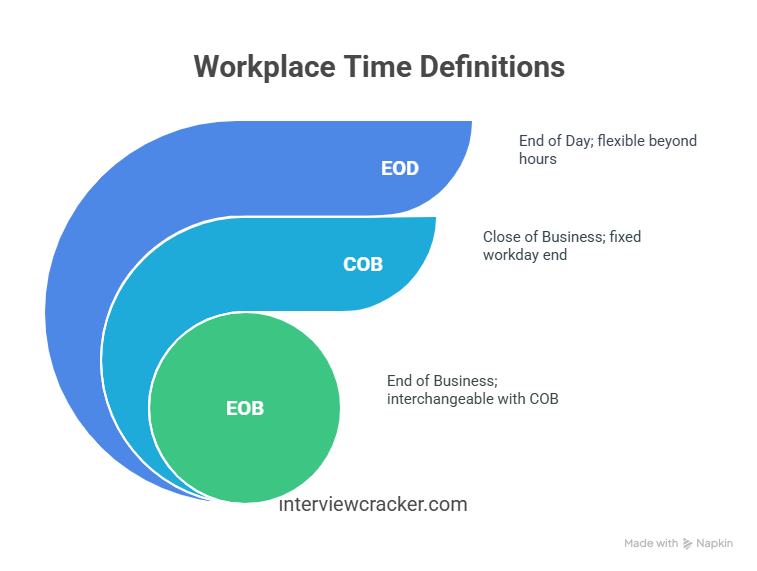
COB vs. EOD vs. EOB:
| Term | Full Form | Meaning |
|---|---|---|
| COB | Close of Business | End of the business workday (usually 5 PM) |
| EOD | End of Day | Slightly more flexible; may extend beyond business hours |
| EOB | End of Business | Used interchangeably with COB in many cases |
FAQs: EOD and COB
Is COB and EOD the Same?
While COB and EOD share similarities in marking the conclusion of daily operations, they are not synonymous. COB signifies the end of formal business hours, while EOD encompasses the completion of tasks and activities, which may occur before or after COB.
What Time is EOD for Work?
The specific time designated as EOD varies across organizations and industries. It depends on factors such as business hours, project deadlines, and operational requirements. EOD may coincide with the close of business hours or be determined based on project milestones and reporting deadlines.
What does COB mean in business?
In business, “COB” means “Close of Business,” which signifies the end of the workday, typically around 5:00 PM local time. It is commonly used to set deadlines, indicating that a task or action should be completed by the end of the business day.
What is the EOD meaning? | What does EOD Mean?
EOD stands for “End of Day,” which refers to the close of business hours or the conclusion of a day’s activities.
What is the full term of EOD?
The full term of EOD is “End of Day.”
Is “EOD today” correct?
Yes, “EOD today” is correct. It is used to specify that something needs to be completed by the end of the current day.
How to use EOD?
EOD is used to indicate a deadline by which tasks or communications should be completed, typically by the close of business hours. For example, “Please submit the report by EOD.”
What is before COB meaning?
In business, “COB” meaning is “Close of Business,” which refers to the end of the workday, typically around 5:00 PM local time.
What is another word for EOD?
Another word for EOD is “close of business” or simply “end of day.”
Conclusion
EOD serves as a guiding beacon for managing time, prioritizing tasks, and ensuring operational efficiency within organizations. Its clarity and definition empower professionals to navigate daily challenges effectively, foster collaboration, and drive strategic decision-making processes. As we embrace the concept of EOD, let us harness its potential to maximize productivity and achieve our goals in the dynamic landscape of business and project management.


